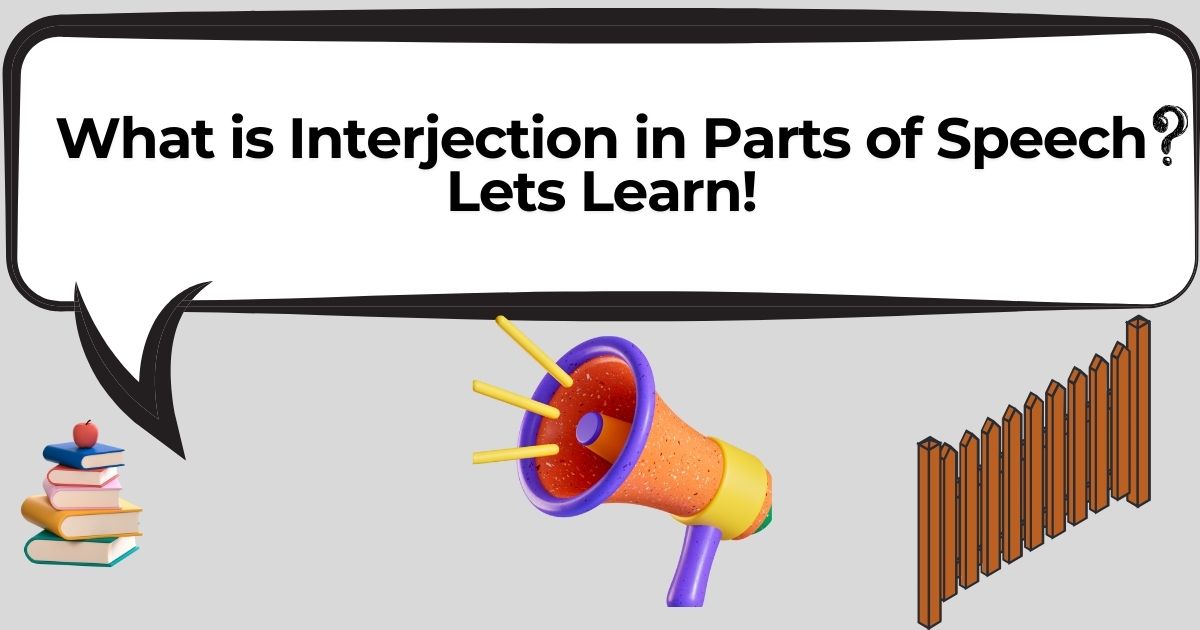Ever caught yourself saying “Wow!” when seeing a stunning sunset, or “Oops!“ after making a small mistake? Those spontaneous outbursts are more than just random words – they’re interjections, fascinating pieces of our language puzzle that pack powerful emotional punches into tiny packages.
Revised on November 16, 2022, the official definition states that an interjection is a word or phrase used to express a feeling or to request or demand something. While interjections are a part of speech, they’re not grammatically connected to other parts of a sentence.
They’re the rebels of grammar, showing up in everyday speech and casual writing to add that perfect emotional splash.
The Magic Behind Interjections: More Than Just Random Outbursts
Think of interjections as the emoji of spoken language – they’ve been around long before smartphones! These expressive words serve as verbal shortcuts for our emotions, helping us communicate feelings instantly. Whether you’re startled, delighted, or just plain confused, there’s an interjection for that.
Structure and Usage
Unlike other parts of speech that play by strict grammatical rules, interjections march to their own beat. Here’s what makes them special:
- They can stand alone as complete thoughts
- Often followed by exclamation marks (!)
- Don’t need to connect grammatically to other words
- Can appear at the start, middle, or end of sentences
Types of Interjections That Spice Up Your Speech

1. Emotional Interjections: From “Yay!” to “Yikes!”
| Emotion | Interjections | Context/Usage | Example |
| Joy | Yay!, Woohoo!, Hurrah! | Celebrations, achievements | “Yay! I got the job!” |
| Surprise | Wow!, Oh!, Whoa! | Unexpected events | “Wow! Look at that shooting star!” |
| Pain/Discomfort | Ouch!, Ow!, Eek! | Physical or emotional pain | “Ouch! I stubbed my toe!” |
| Disgust | Ew!, Yuck!, Ugh! | Unpleasant situations | “Ew! This milk has gone bad!” |
| Fear | Eek!, Yikes!, Oh no! | Scary or dangerous situations | “Yikes! A spider!” |
| Disappointment | Aw!, Oh man!, Dang! | Letdowns or missed opportunities | “Aw! I missed the bus!” |
| Sympathy | Oh dear!, Aww!, Poor thing! | Showing concern or empathy | “Oh dear! Are you okay?” |
| Relief | Phew!, Thank goodness! | After avoiding problems | “Phew! That was close!” |
Comprehensive Table of Emotional Interjections
Click to open document
2. Command and Control: Directive Interjections
These interjections are like verbal traffic lights – they get people to stop, look, or listen. Examples include:
- “Stop!” (immediate halt)
- “Look!” (draw attention)
- “Shh!” (request for quiet)
- “Hey!” (get attention)
3. Thinking Out Loud: Cognitive Interjections
These are your “brain-to-mouth” moments:
- “Hmm…” (contemplation)
- “Aha!” (sudden realization)
- “Oh!” (understanding)
- “Let’s see…” (processing thoughts)
100 Common Interjections You Should Know
Time for a power-packed list of interjections you’ll hear in everyday American English. Here’s your go-to reference:
1-20: Basic Emotions
- Wow!, Oh!, Ah!, Ooh!, Yay!
- Oops!, Uh-oh!, Eek!, Yikes!, Phew!
- Ugh!, Eww!, Yuck!, Blah!, Meh!
- Ha!, Hehe!, Ahem!, Psst!, Shh!
What Part of Speech is an Exclamation?
Here’s where things get interesting! While all exclamations can be interjections, not all interjections are exclamations. An exclamation is actually a type of sentence that expresses strong feeling, while an interjection is specifically a part of speech.
Think of it this way:
- Interjection: “Wow!”
- Exclamatory sentence: “What a beautiful day!”
Pro Tips for Using Interjections Effectively
- Context is King
- Consider your audience
- Match the emotion to the situation
- Be aware of cultural differences
- Professional Settings
- Limit use in formal writing
- Choose milder alternatives
- Focus on clarity over expression
- Written Communication
- Use punctuation thoughtfully
- Consider reader interpretation
- Don’t overuse exclamation points
FAQs
What is interjection and examples? An interjection is a word or phrase expressing sudden feeling or emotion. Examples include “Wow!” for surprise, “Ouch!” for pain, and “Hooray!” for joy.
What is interjection structure? Interjections are unique because they:
- Can stand alone as complete thoughts
- Don’t need to follow normal grammar rules
- Often end with exclamation points
- Can be single words or short phrases
What part of speech is exclamation? An exclamation is a type of sentence, while an interjection is a part of speech. Interjections often appear in exclamatory sentences but are their own distinct category in English grammar.
Wrapping It Up
Interjections might be the smallest members of the parts of speech family, but they’re mighty in their impact. They add color, emotion, and immediacy to our language, helping us express feelings that sometimes can’t be captured in regular words.
Remember, like any powerful tool, use them wisely. The right interjection at the right moment can make your communication more effective and engaging. Too many, though, and you might sound like a cartoon character!
What’s your favorite interjection? Do you find yourself using different ones in different situations? Share your thoughts in the comments below!
More Post:

Agnes Ava is a passionate English Grammar enthusiast, helping learners Master Language rules and nuances through clear, Engaging Guidance.
